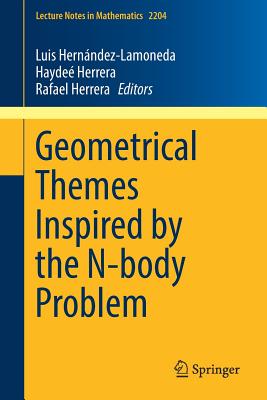Presenting a selection of recent developments in geometrical problems inspired by the N-body problem, these lecture notes offer a variety of approaches to study them, ranging from variational to dynamical, while developing new insights, making geometrical and topological detours, and providing historical references. A. Guillot’s notes aim to describe differential equations in the complex domain, motivated by the evolution of N particles moving on the plane subject to the influence of a magnetic field. Guillot studies such differential equations using different geometric structures on complex curves (in the sense of W. Thurston) in order to find isochronicity conditions. R. Montgomery’s notes deal with a version of the planar Newtonian three-body equation. Namely, he investigates the problem of whether every free homotopy class is realized by a periodic geodesic. The solution involves geometry, dynamical systems, and the McGehee blow-up.A novelty of the approach is the use of energy-balance in order to motivate the McGehee transformation. A. Pedroza’s notes provide a brief introduction to Lagrangian Floer homology and its relation to the solution of the Arnol’d conjecture on the minimal number of non-degenerate fixed points of a Hamiltonian diffeomorphism.
Presenting a selection of recent developments in geometrical problems inspired by the N-body problem, these lecture notes offer a variety of approaches to study them, ranging from variational to dynamical, while developing new insights, making geometrical and topological detours, and providing historical references.
A. Guillot''s notes aim to describe differential equations in the complex domain, motivated by the evolution of N particles moving on the plane subject to the influence of a magnetic field. Guillot studies such differential equations using different geometric structures on complex curves (in the sense of W. Thurston) in order to find isochronicity conditions.
R. Montgomery''s notes deal with a version of the planar Newtonian three-body equation. Namely, he investigates the problem of whether every free homotopy class is realized by a periodic geodesic. The solution involves geometry, dynamical systems, and the McGehee blow-up. A novelty of the approach is the use of energy-balance in order to motivate the McGehee transformation.
A. Pedroza''s notes provide a brief introduction to Lagrangian Floer homology and its relation to the solution of the Arnol''d conjecture on the minimal number of non-degenerate fixed points of a Hamiltonian diffeomorphism.
Get Geometrical Themes Inspired by the N-body Problem by at the best price and quality guranteed only at Werezi Africa largest book ecommerce store. The book was published by Springer International Publishing AG and it has pages. Enjoy Shopping Best Offers & Deals on books Online from Werezi - Receive at your doorstep - Fast Delivery - Secure mode of Payment
 Jacket, Women
Jacket, Women
 Woolend Jacket
Woolend Jacket
 Western denim
Western denim
 Mini Dresss
Mini Dresss
 Jacket, Women
Jacket, Women
 Woolend Jacket
Woolend Jacket
 Western denim
Western denim
 Mini Dresss
Mini Dresss
 Jacket, Women
Jacket, Women
 Woolend Jacket
Woolend Jacket
 Western denim
Western denim
 Mini Dresss
Mini Dresss
 Jacket, Women
Jacket, Women
 Woolend Jacket
Woolend Jacket
 Western denim
Western denim
 Mini Dresss
Mini Dresss
 Jacket, Women
Jacket, Women
 Woolend Jacket
Woolend Jacket
 Western denim
Western denim
 Mini Dresss
Mini Dresss






























































